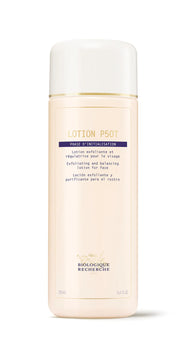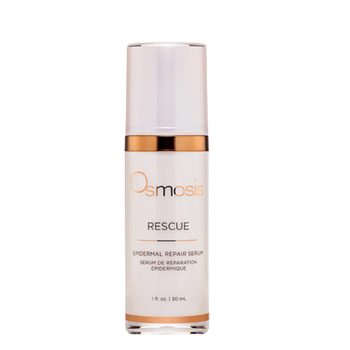
Before we discuss the treatment of melanin overproduction, we need to give you some insight into its triggers. As you continue to read, you may be surprised to find out that there are more causes of hyperpigmentation than UV exposure alone.
After the sun, the second most common cause of visibly proliferated melanin in the outermost layers of the skin is our hormones. Yes, it’s just another thing women have to deal with due to the hormonal fluctuations we encounter throughout our lifetime. Hormonal contraceptives, pregnancy, breastfeeding, hormonal therapies and imbalances can all trigger a form of pigmentation called melasma.
Melasma is presented as larger, blotchy patches of darkened skin that is typically symmetrical. It’s a protective response to inflammation caused by hormonal fluctuations and can be intensified by heat and UV rays.
It is the most difficult to treat type of pigmentation because it requires a three-pronged approach. First, we must lift the melanin in the superficial layers of the skin, next we need to work internally to decrease hormonal imbalance, and lastly, the skin must be protected against future activation.
Inflammation within the skin and body, extreme heat, medications that are damaging to the liver, and physical trauma to the skin such as acne or other lesions can all trigger increased melanin production.
In order to treat hyperpigmentation whether it's hormonally induced or developed from sun exposure, it's a good idea to have a base understanding of how it develops. Although melasma can be tougher to treat and is less predictable, the mechanisms within the skin that create hyperpigmentation are similar.
The skin's melanocyte cells release pigment when it comes into contact with aggressors like heat, sun, free-radicals, and hormonal shifts. The melanin created by melanocytes is designed to shield the surrounding cells' DNA to protect it from damage. Some of these now pigmented cells will remain in the deeper layers of the epidermis while others will migrate upwards towards the surface of the skin.

Hyperpigmentation can create an uneven appearance to the tone of the skin as these pigmented cells also absorb light instead of reflecting it which diminishes the skin's natural glow. As skin therapists, if we could send one clear message out to those who experience hyperpigmentation, it’s that the key to its reduction is persistence and continued treatment.
Hyperpigmentation is so difficult to treat because it lies within the deepest layers of our skin. It takes approximately 30 to 45 days for one layer of cells to cycle to the next phase in their life until it finally reaches the top layer of the epidermis in order to shed itself. As we age, that cellular cycle can take up to 60 days, which means it becomes harder to treat pigmentation as we get older. This is the reason skin therapists recommend preventative care while our cells are still able to get the most therapeutic benefit from active ingredients and professional facial treatments.
Since there are 6 layers of skin in the epidermis, it can take anywhere from 6 months to a year for the lowermost layers to reach the surface. Since some of the pigmented cells will remain planted deeply within the layers of the skin while others move towards the surface, hyperpigmented areas can always be reactivated. What we can do, however, is control the pigment that’s moving towards the outermost layers where it becomes visible. Once you have successfully reduced hyperpigmented skin, avoiding the things that can provoke new melanin production and continuing using effective homecare treatment will help to mitigate new melanin development.
Luckily, many of the ingredients used to treat pigmentation are also known to be highly effective for age prevention and inflammation reduction as well. Let’s explore the active ingredients you can use to successfully treat visible hyperpigmentation.

The Osmosis Rescue serum has a remarkable ability to neutralize inflammatory toxins, calm existing irritation, activate epidermal wound repair, and provide the skin with the tools needed to permanently treat pores, age spots, and skin texture changes.

The Catalyst AC-11 contains a patented formula that activates your natural zinc finger remodelling process, which is a critical part of cellular DNA repair and is specifically suited to UV damage reversal. The unique combination of vitamin C, amino acids and minerals encourages the skin to increase collagen and elastin production, promotes wound healing and improves the skin’s ability to protect against oxidative UV exposure. Tyrosinase, the enzyme that activates melanocyte activity, is effective inhibited with regular use of concentrated vitamin c applied topically. The benefits of this serum can be seen with skin tags, broken capillaries, fine lines and wrinkles, scarring, and of course, hyperpigmentation.

We love to use the highly concentrated Masque Pigm 400 from Biologique Recherche to combat hyperpigmentation. It contains exceptionally brightening antioxidants, which restore the skin’s radiance like no other. Australasica fruit extract works as a its gentle AHA to brighten and smooth skin, while ascorbyl glucoside regulates oxidative effects caused by UV exposure. The result is reduced pigmentation and future protection against uneven melanin production. In addition, the mask is made from Lyocell, a material smoother than silk and 50% more absorbent than cotton – boosting the effectiveness of the formula.

Supporting the skin from the inside out is imperative to long term skin health, but when it comes to internally activated hyperpigmentation, it’s simply paramount. Skin Ultimate contains five top-of-the-range beauty supplements for a bright, even complexion. Each pod features a daily dose of powerful Skin Antioxidants, Skin Vit A+, Skin Omegas+, Skin Asta-boost and Skin Co-Q10+.
If you know Glow, you also know that we can’t go a few minutes without mentioning the powerful physiological changes that Vitamin A can affect onto the skin when applied topically and taken internally. There’s a good reason why chemists and physicians recommend using antioxidants like vitamin A and vitamin C; they correct and prevent almost all skin conditions.
Vitamin A helps create appropriate distribution of melanin within the skin by blocking the transport of melanin to surrounding epidermal cells from the melanocyte and reduces melanin production all together. Clinical studies show vitamin A can reduce hyperpigmentation by up to 60%.
If you have sensitive skin we recommend starting with Osmosis Calm Vitamin A Serum, but if your skin is more resilient, Correct is a powerful way to create instant change.
Treating the skin from the inside out, especially when it comes to melasma is paramount. Advanced Nutrition Programme’s Skin Antioxidant is formulated with seven super plant nutrients. Just as plants need antioxidants to protect them from damaging UV rays, so does your skin. Any source of light, even artificial, creates free radicals which causes premature ageing and melanin activation. You can Safeguard your skin from the inside out with this Vitamin A and Omega supplement to keep it looking younger for longer.

Last, but perhaps most importantly, sun protection is non-negotiable for anyone who wants to protect their skin from hyperpigmentation, sensitization, and premature photoaging. At Glow, we opt for physical, mineral SPF over chemical options. As skin therapists, our goal is to always protect and enhance the skin and since mineral sunscreens cannot disrupt the skin’s natural function it’s the best choice to pair with other active ingredients like vitamin A and C.
Physical SPF like COOLA’s cloudlike Daydream Primer and Glo’s Tinted Mineral Primer blocks sun exposure by defecting and scattering UV rays, while chemical sunscreens convert UV rays into heat which is then absorbed into the skin. Since hyperpigmentation can be activated by heat, we urge you to choose a mineral SPF whenever possible.
We hope this lesson in hyperpigmentation has provided you with the knowledge that you need to choose skin protecting ingredients and treatments for years to come.
xo Glow






Comments (0)
Back to Blog